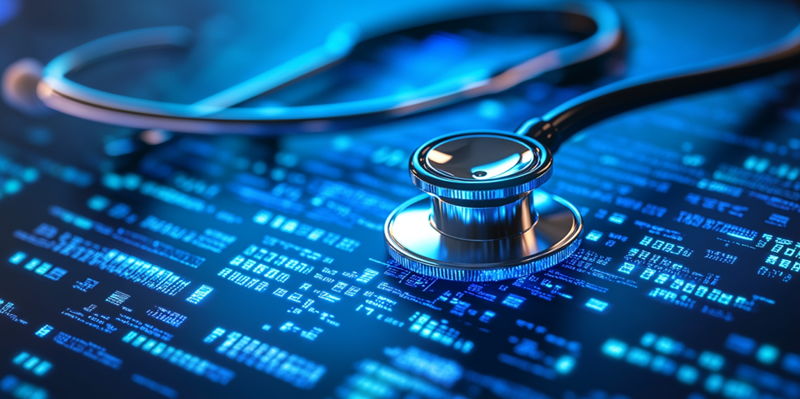The year 2024 has witnessed a dramatic increase in data breaches within the US healthcare sector, impacting over 14 million patients. This alarming trend highlights the vulnerabilities inherent within healthcare organizations as they integrate more digital tools and technologies. The primary culprit behind these breaches is ransomware, which not only compromises data security but also poses severe risks to patient safety and operational stability. The magnitude of these attacks paints a concerning picture for the healthcare industry, underscoring the urgent need for advanced cybersecurity measures.
The Scale of Data Breaches
In 2024, the extent of data breaches has reached unprecedented levels, with over 14 million patients affected by cyberattacks that compromise personal and medical information. This staggering number underscores how deeply entrenched vulnerabilities are within healthcare organizations (HCOs). The breaches result in significant data loss and potential disruptions to patient care, eroding trust in the healthcare system. Ransomware has emerged as the prime weapon of choice for cybercriminals, responsible for 91% of these breaches. This method’s effectiveness in extracting sensitive information and disrupting healthcare operations makes it a favored tactic among malicious actors.
The Rise of Ransomware Attacks
Ransomware attacks in the healthcare sector have become increasingly sophisticated and frequent. These attacks are particularly devastating for healthcare organizations because they can lead to life-threatening consequences. When medical systems are compromised, the ability to provide timely care diminishes, forcing healthcare providers into a difficult position where they must choose between paying the ransom or risking patient safety. The attackers often demand large sums of money to restore access to the data, and HCOs find themselves compelled to comply to avoid operational standstills. This escalating trend not only emboldens cybercriminals but also strains the resources and finances of healthcare facilities, making them more susceptible to future attacks.
High-Value Data Targets
Healthcare data’s immense value on the black market makes HCOs prime targets for cyberattacks. The stolen data includes critical personal and medical records, which can be used for identity theft, insurance fraud, and other malicious activities. The lucrative nature of healthcare data incentivizes cybercriminals to devise more intricate and damaging attacks. The breach of such sensitive information tarnishes the trust patients place in healthcare providers. The repercussions are far-reaching, influencing not only the patients directly affected by the breaches but also the broader public perception of healthcare data security.
Vulnerabilities and Attack Surfaces
The expanding digital landscape in healthcare has inadvertently created more attack surfaces for cybercriminals. New technologies such as artificial intelligence (AI), electronic health records (EHRs), and the Internet of Medical Things (IoMT) are revolutionizing healthcare but also introducing new vulnerabilities. Healthcare organizations struggle to maintain robust security measures that keep pace with this rapid technological adoption. Cybercriminals are highly skilled at identifying and exploiting weaknesses within healthcare networks. Notable vulnerabilities targeted in 2024 include Microsoft Exchange, PaperCut servers, Citrix Bleed, and the older Microsoft Windows WPAD protocol.
Strategic Exploitation by Cyber Groups
Cyber groups such as BlackCat/ALPHV have refined their strategies to exploit both new and known vulnerabilities. They skillfully weave together various weaknesses to ensure their attacks are not only successful but enduring. By maintaining persistence in healthcare networks, these cybercriminals can continue to extract data and disrupt operations for extended periods. The strategic use of multiple vulnerabilities complicates the cybersecurity landscape for healthcare organizations. It necessitates a comprehensive security approach that addresses both prevention and response.
Operational and Patient Safety Risks
The susceptibility of healthcare systems to cyberattacks poses grave risks to patient safety and operational continuity. When systems are compromised, the ability to deliver critical medical services is hindered, leading to potentially life-threatening situations. This critical dependence on seamless access to medical data and systems adds an extra layer of urgency in responding to cyber threats. Healthcare organizations are often forced to pay ransoms quickly to restore operations, highlighting the immediate and severe impact of these attacks. The pressure to resolve these incidents swiftly can result in hasty decisions that might not align with long-term cybersecurity strategies, further exposing HCOs to repeated attacks.
Urgent Need for Improved Cybersecurity
In 2024, the US healthcare sector has seen a shocking rise in data breaches affecting over 14 million patients. This disturbing trend underscores the weaknesses in healthcare organizations as they adopt more digital tools and technologies. Ransomware is the chief offender behind these breaches, jeopardizing not just data security but also patient safety and operational efficiency. These attacks demonstrate the critical need for improved cybersecurity measures within the industry.
Healthcare organizations are particularly vulnerable to cyberattacks because they store vast amounts of sensitive patient information. The rise in data breaches makes it clear that traditional security methods are no longer adequate. Ransomware, a type of malware that encrypts data and demands payment for its release, has become increasingly sophisticated and harder to combat. This form of cybercrime not only disrupts hospital operations but can also lead to severe consequences like delayed treatments and compromised patient care.
As more healthcare providers transition to digital systems, the potential for cyber threats grows exponentially. This situation calls for a heightened focus on cybersecurity, including the implementation of advanced protective measures and regular training for staff on recognizing and responding to cyber threats. The alarming increase in data breaches serves as a wake-up call, emphasizing the need for stronger defenses to protect patient information and ensure the stability of healthcare services.

